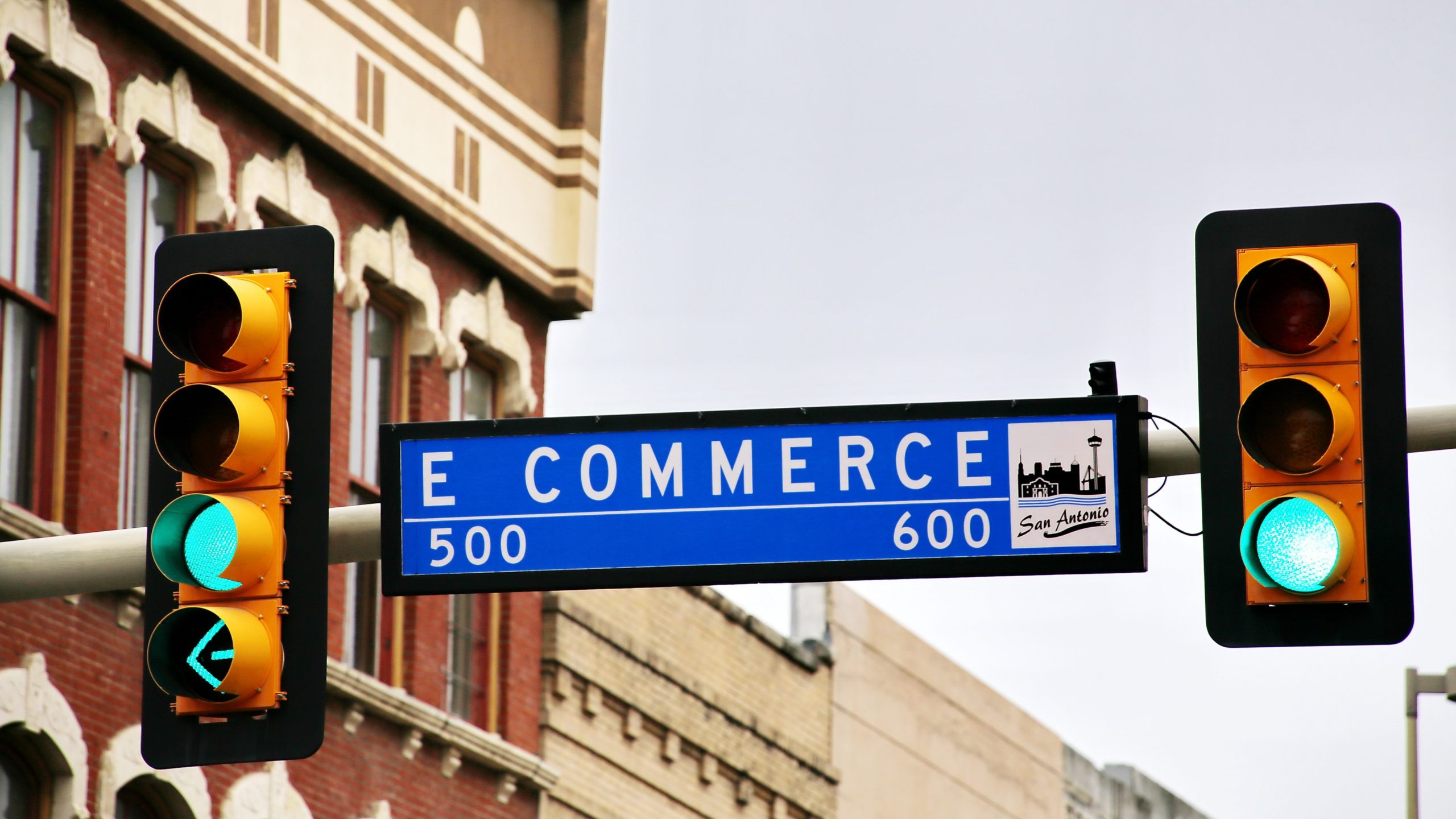With challenges come opportunities.
While not many of us would have predicted that a global pandemic would contribute to a dramatic and sustainable rise in the online marketplace economy, but that is now where we are, and the insights suggest that it’s where we’re staying.
Locked down, but online sales spike up
As the pandemic took hold of the world, affecting all regions and countries in various ways, Australia saw a dramatic shift in retail behaviour. Bricks and mortar stores shut either temporarily due to lockdowns, or permanently due to the instability of traditional retail, and consumers’ online purchasing behaviour took unexpected turns.
According to the Australian Bureau of Statistics (ABS), Australia had record online retail sales in August 2021 and was then eclipsed again a month later with $4,341.4 million in total online retail sales in September – the highest level for the monthly online retail sales in the history of this series.
In the previous year – 2020, the first year of the pandemic, Amazon AU was the most visited retail website in Australia in Q4, 2020, according to Semrush data. The online marketplace giant had an additional 55 million website visits than the same period the previous year.
In 2019, prior to the pandemic, marketplaces were already the dominant channel in Australia, accounting for 61.3 per cent of variety store purchases – strong growth of 23.9 per cent year-on-year.

The time has come for brands big and small to pay attention.
A new way to window shop
As consumer behaviour shifts more to online, brands and e-commerce experts are noticing that consumers are finding new ways to continue old habits.
Consumers are now discovering brands and products online, with marketplaces becoming digital department stores.
While sales are a key driver for brands to sell on online marketplaces, brand awareness should also be a key motivator to increase a brand’s online presence. Savvy brands understand the opportunity, with e-commerce departments collaborating closely with their Marketing department colleagues to maximise the opportunity to increase brand awareness.
The 2021 Digital Commerce 360 Online Marketplace Report explains the opportunity that marketplaces present as an effective acquisition tool.
In 2016, US consumers were asked if they had ever purchased from a seller’s own website after finding their products on Amazon, and a third said ‘yes’. Fast forward five years, and in 2021, 57 per cent of shoppers’ surveyed indicated they had purchased from a seller’s own website after finding their products on any marketplace. This is also an increase from 2020, when 52 per cent of consumers purchased directly from the merchant after discovering the seller on a marketplace.
Closer to home, in 2021, a client of TWENTY TWENTY experienced an overall 55 per cent increase in sales after four months of working together – the only activity the brand did differently in that time was launch its products on marketplaces.
There’s a marketplace for every brand and product
Brands and businesses don’t need to be large-scale and established to begin selling on marketplaces.
With 47 per cent of Australians using online marketplaces to shop online now it makes sense for all brands – whether they are established or still emerging to sell on marketplaces.
When brands think of marketplaces, many think of Amazon. With more than 11,000 Australian businesses now selling on Amazon Australia since launching four years ago, Amazon’s presence, capabilities and infrastructure in Australia is growing – rapidly.
However, there are now over 50 marketplaces available for brands to sell on. What is critical when thinking of a marketplace strategy for your brand is channel selection – not every online marketplace is suitable to your brand or product.
Understanding the audience, category strength and competitiveness of each marketplace is key to the channel selection and overall success of generating sales on the right marketplace for your brand.
Understanding the environment
TWENTY TWENTY are marketplace specialists and understand the ‘rules of engagement’ when it comes to operating in the dozens of online marketplaces now available in Australia.
Each marketplace has its own policies, terms, and ways of working, and for time-poor e-commerce and digital professionals, it can be time consuming to learn the lingo, let alone manage the set up, technology, launch and optimisation of the marketplace channel.

Partnering with a marketplace specialist – who speaks the language of the platform – removes the burden and avoids brands having to learn the hard lessons, so they can instead focus on making the most of the channel and opportunity that is set up and optimised by experts.
Marketplace experts can also leverage the existing strong relationships with key personnel at the various marketplaces, so that brands don’t need to build those important stakeholder relationships.
Strategy, guidance and support to maximise events and product promotions is also added value for the clients of marketplace specialists, helping brands to learn more about the operating environment of marketplaces from the people who understand them best.
To put it very simply, key to marketplace success is good products on the right marketplace channel, with good product data, and excellent customer service.
Begin or maximise your online marketplace journey
It doesn’t matter where your brand is in its marketplace journey – whether you’re yet to begin, or you’ve started and it’s not quite working like you planned.
Be seen on marketplaces – Contact TWENTY TWENTY to connect your products with millions of shoppers on marketplaces.
With challenges come opportunities.
While not many of us would have predicted that a global pandemic would contribute to a dramatic and sustainable rise in the online marketplace economy, but that is now where we are, and the insights suggest that it’s where we’re staying.
Locked down, but online sales spike up
As the pandemic took hold of the world, affecting all regions and countries in various ways, Australia saw a dramatic shift in retail behaviour. Bricks and mortar stores shut either temporarily due to lockdowns, or permanently due to the instability of traditional retail, and consumers’ online purchasing behaviour took unexpected turns.
According to the Australian Bureau of Statistics (ABS), Australia had record online retail sales in August 2021 and was then eclipsed again a month later with $4,341.4 million in total online retail sales in September – the highest level for the monthly online retail sales in the history of this series.
In the previous year – 2020, the first year of the pandemic, Amazon AU was the most visited retail website in Australia in Q4, 2020, according to Semrush data. The online marketplace giant had an additional 55 million website visits than the same period the previous year.
In 2019, prior to the pandemic, marketplaces were already the dominant channel in Australia, accounting for 61.3 per cent of variety store purchases – strong growth of 23.9 per cent year-on-year.

The time has come for brands big and small to pay attention.
A new way to window shop
As consumer behaviour shifts more to online, brands and e-commerce experts are noticing that consumers are finding new ways to continue old habits.
Consumers are now discovering brands and products online, with marketplaces becoming digital department stores.
While sales are a key driver for brands to sell on online marketplaces, brand awareness should also be a key motivator to increase a brand’s online presence. Savvy brands understand the opportunity, with e-commerce departments collaborating closely with their Marketing department colleagues to maximise the opportunity to increase brand awareness.
The 2021 Digital Commerce 360 Online Marketplace Report explains the opportunity that marketplaces present as an effective acquisition tool.
In 2016, US consumers were asked if they had ever purchased from a seller’s own website after finding their products on Amazon, and a third said ‘yes’. Fast forward five years, and in 2021, 57 per cent of shoppers’ surveyed indicated they had purchased from a seller’s own website after finding their products on any marketplace. This is also an increase from 2020, when 52 per cent of consumers purchased directly from the merchant after discovering the seller on a marketplace.
Closer to home, in 2021, a client of TWENTY TWENTY experienced an overall 55 per cent increase in sales after four months of working together – the only activity the brand did differently in that time was launch its products on marketplaces.
There’s a marketplace for every brand and product
Brands and businesses don’t need to be large-scale and established to begin selling on marketplaces.
With 47 per cent of Australians using online marketplaces to shop online now it makes sense for all brands – whether they are established or still emerging to sell on marketplaces.
When brands think of marketplaces, many think of Amazon. With more than 11,000 Australian businesses now selling on Amazon Australia since launching four years ago, Amazon’s presence, capabilities and infrastructure in Australia is growing – rapidly.
However, there are now over 50 marketplaces available for brands to sell on. What is critical when thinking of a marketplace strategy for your brand is channel selection – not every online marketplace is suitable to your brand or product.
Understanding the audience, category strength and competitiveness of each marketplace is key to the channel selection and overall success of generating sales on the right marketplace for your brand.
Understanding the environment
TWENTY TWENTY are marketplace specialists and understand the ‘rules of engagement’ when it comes to operating in the dozens of online marketplaces now available in Australia.
Each marketplace has its own policies, terms, and ways of working, and for time-poor e-commerce and digital professionals, it can be time consuming to learn the lingo, let alone manage the set up, technology, launch and optimisation of the marketplace channel.



Partnering with a marketplace specialist – who speaks the language of the platform – removes the burden and avoids brands having to learn the hard lessons, so they can instead focus on making the most of the channel and opportunity that is set up and optimised by experts.
Marketplace experts can also leverage the existing strong relationships with key personnel at the various marketplaces, so that brands don’t need to build those important stakeholder relationships.
Strategy, guidance and support to maximise events and product promotions is also added value for the clients of marketplace specialists, helping brands to learn more about the operating environment of marketplaces from the people who understand them best.
To put it very simply, key to marketplace success is good products on the right marketplace channel, with good product data, and excellent customer service.
Begin or maximise your online marketplace journey
It doesn’t matter where your brand is in its marketplace journey – whether you’re yet to begin, or you’ve started and it’s not quite working like you planned.
Be seen on marketplaces – Contact TWENTY TWENTY to connect your products with millions of shoppers on marketplaces.

